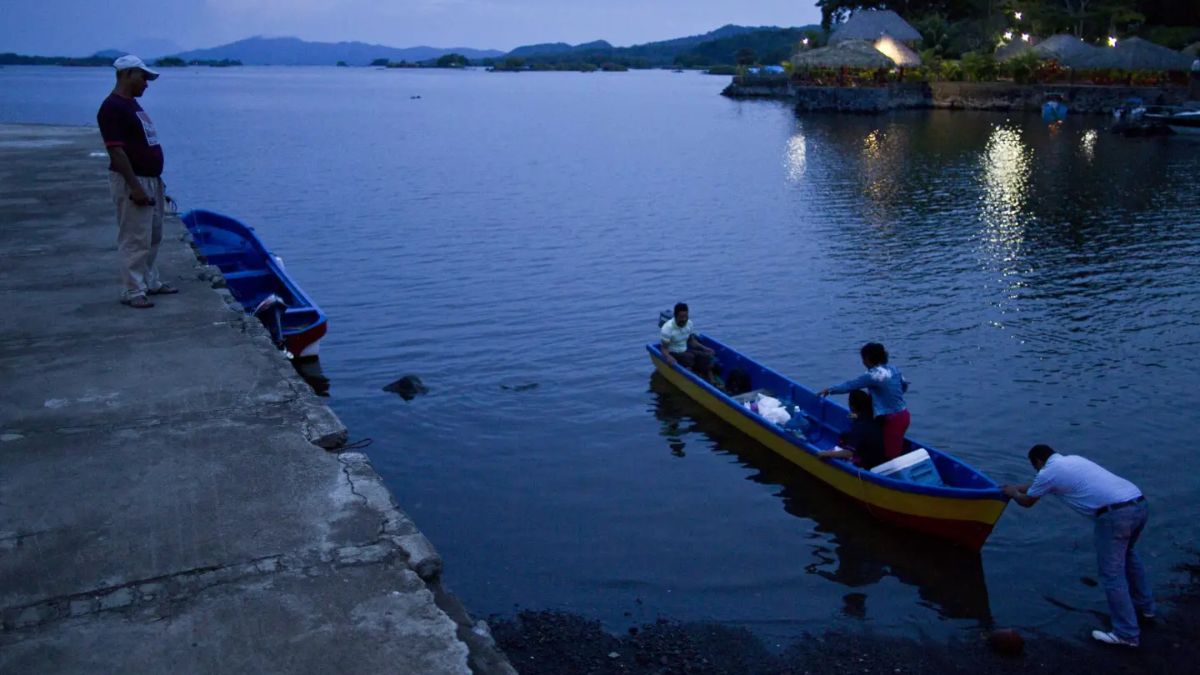The nation of Nicaragua in Central America had once embarked on an ambitious plan to construct a canal. Not just any waterway, but one rivalling the crucial Panama canal.
It has been a decade since the symbolic ground-breaking of the canal. There is no canal. The project was officially terminated on Wednesday.
We explain why the project, introduced in 2014 with Chinese backing, would have been a strategic gem. We also look at why Nicaragua has cancelled the project.
Origins of the Nicaragua canal project
The idea of constructing a canal through Nicaragua traces back almost a century. During the early 1900s, the United States had considered building it, before opting for the shorter Panama route.
The idea of building an alternative to the Panama Canal resurfaced amid concerns over Panama’s water shortages and heavy traffic jams. The Nicaraguan route promised a substantial increase in global shipping capacity. It would also help the Nicaraguan economy through job creation and increased trade traffic.
Chinese involvement in the canal
The Chinese businessman behind the Nicaragua Canal project was Wang Jing. Wang was primarily known for his ventures in telecommunications. Before his involvement with the Nicaragua Canal, Wang Jing had built a substantial fortune in the telecommunications industry.
Despite his significant investments in various sectors, Wang had no previous experience in civil engineering or large-scale infrastructure projects akin to the proposed canal, which further contributed to skepticism and concern over the project’s viability and his ability to execute it effectively.
Impact Shorts
More ShortsHe owned the Hong Kong-based company, HK Nicaragua Canal Development Investment Co., which was granted the concession to build and operate the canal. His sudden rise to prominence with such a high-stakes international project raised questions about the due diligence and oversight of such a transformative endeavour.
Stalled ambitions
The symbolic ground-breaking for the project happened in 2014. Despite initial enthusiasm, the project faced immediate setbacks. From the outset, it was mired in controversy, primarily due to environmental and social impacts.
The canal would have divided Lake Nicaragua into two parts. This vast lake, crucial for the region’s freshwater supply, also serves as a habitat for numerous endangered species. Environmentalists warned of severe consequences for Nicaragua’s ecosystem, particularly the lake.
Moreover, the canal’s route was set to displace approximately 120,000 people, sparking widespread protests from farmers and indigenous communities who faced losing their lands and livelihoods. There were widespread protests about this. The response from the Nicaraguan government was harsh, with several protest leaders receiving draconian prison sentences. In 2019, three farmers’ leaders who participated in protests were sentenced to prison for 216 years, 210 years, and 159 years. They were accused of plotting a coup.
Such crackdown only exacerbated public dissent and international scrutiny.
Financial and political hurdles
Financial viability also posed a significant challenge. The canal, with an estimated cost of $50 billion, depended on substantial foreign investment. That was compromised following the 2015 financial downturn in China. Wang’s financial stability took a significant hit during the stock market crash. He reportedly lost up to 85 per cent of his wealth.
Politically, the canal became a symbol of President Daniel Ortega’s capricious regime. The Nicaraguan government rushed the project through without thorough environmental studies or public consultation, further alienating potential supporters at home and abroad.
As such, the work on the project never really began.
Cancellation of the project
After years of inactivity and escalating public and international pressure, Nicaragua’s congress officially cancelled the project on Wednesday. The cancellation is an acknowledgment of the project’s impracticality amid persistent financial, environmental, and social challenges. Moreover, the global economic landscape has shifted, with increasing scrutiny on large-scale infrastructure projects that pose significant environmental risks.
The Nicaragua Canal, intended to be a monumental feat of engineering that could alter global shipping routes, instead became a cautionary tale of environmental disregard and flawed planning. As the world grapples with the implications of climate change and environmental degradation, the project’s cancellation may well signal a growing priority for sustainability over unchecked industrial ambition.
With inputs from agencies
)